How to Compare Rows and Columns in SQL Server Databases
Whether you are a database administrator, developer, or analyst, understanding how to effectively compare data in SQL Server databases is an essential skill. In this article, we will cover various methods and techniques for comparing rows and columns using SQL queries and dbForge Data Compare for SQL Server.
Examine the differences between rows or columns in SQL
In SQL Server databases, you may need to compare columns and rows and find differences to identify data changes or inconsistencies for the following reasons:
- Keeping data in sync across multiple databases
- Identifying and correcting data discrepancies in your database
- Migrating data from one database to another
- Updating a staging or backup database with the production database
- Tracking data changes for compliance and security purposes
Thus, understanding of how to compare columns and/or rows in SQL can help you maintain data consistency and database integrity.
What are comparison operators in SQL Server?
SQL comparison operators can be used in condition clauses to compare an expression to another value or expression. These operators compare the value stored in a column to a specified value and return only those values that meet the specified condition.
| Operator | Description |
|---|---|
| = | Equal to |
| != or <> | Not equal to |
| > | Greater than |
| >= | Greater than or equal to |
| < | Less than |
| <= | Less than or equal to |
Generate SQL examples for comparing rows or columns
As a prerequisite, we have created SQL tables and populated them with test data for comparing rows and columns in SQL Server. Usually, this can be done manually with the help of the CREATE and INSERT statements. However, you can simplify this process and use dbForge Data Generator for SQL Server. The tool allows you to quickly populate tables with dummy data in SQL Server.
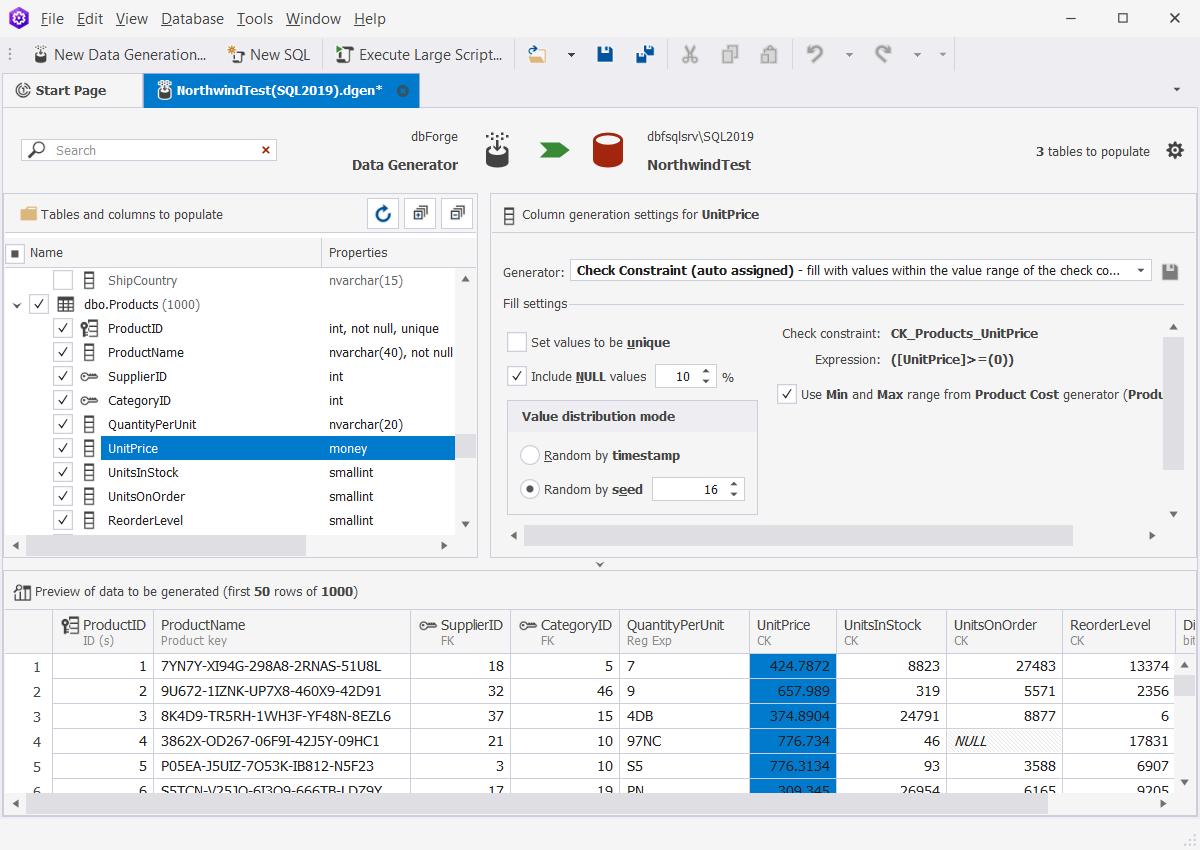
How to compare two columns in SQL Server
SQL allows for the comparison of columns either within the same table or across different tables.
Compare two columns within the same table
A SELF JOIN, which joins a table to itself, can be used to compare columns within the same table. The syntax for SELF JOIN would be:SELECT column_names FROM table1 t1, table1 t2 WHERE condition_a AND condition_b;
The pattern includes the table name - table1 - joined to itself with different t1 and t2 aliases, and the join condition (condition_a and condition_b) specifying the columns to be compared. The use of aliases allows for renaming the columns in a table so the database engine can execute your query. Note that aliases must be used because the columns you join have the same column names.
Here we are going to compare all products purchased in the same city. The output would be as follows:
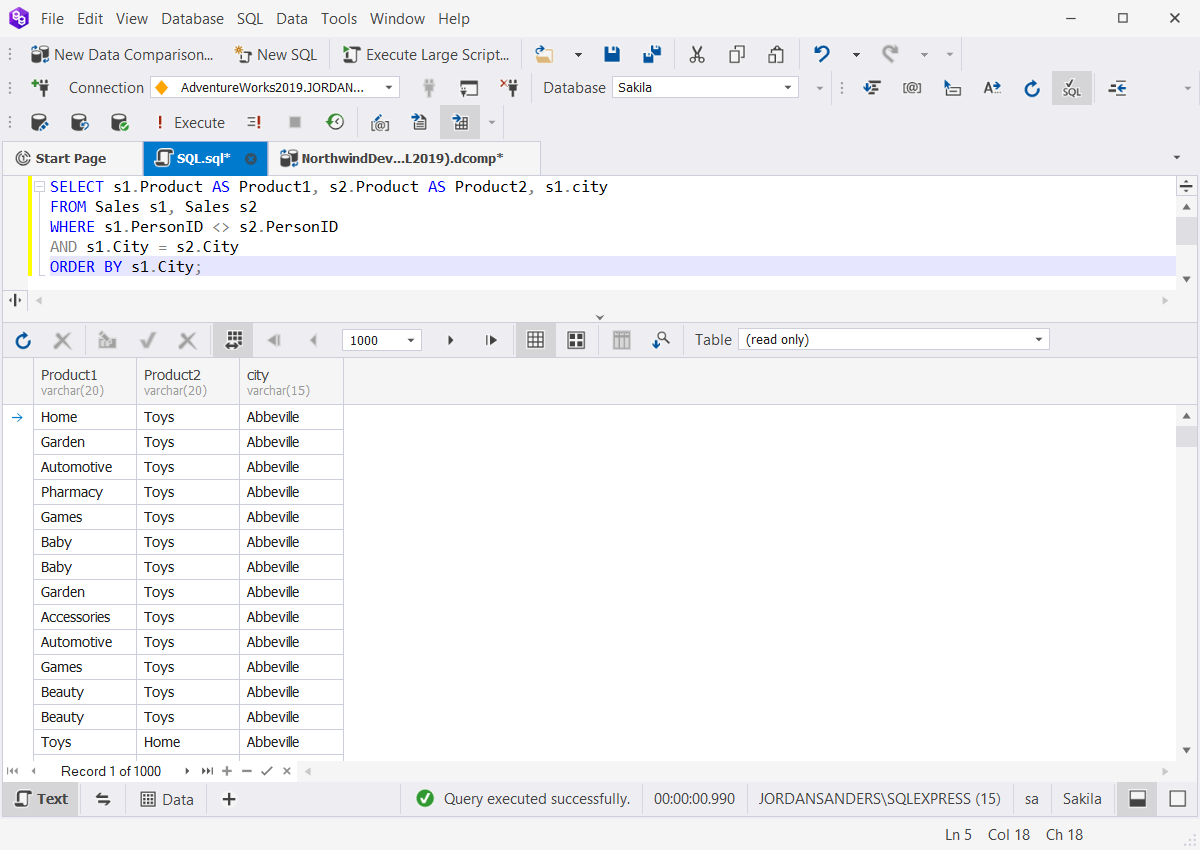
Compare two columns from different tables
When comparing two columns between different tables, several techniques can be used such as:
- WHERE clause, which compares and retrieves data based on a specified condition.
- JOIN, which joins two tables on common columns to compare and retrieve data from both tables.
- UNION operator, which combines the results of two SELECT statements, removes duplicates, and compares the data in the resulting table. Both statements must have the same number of columns, similar data types, and the same order of columns. Unlike JOIN and WHERE, the UNION operator processes the NULL values.
An example of using the UNION operator is to compare data in two tables - students_A and students_B - by combining the results of SELECT statements on each table. This will allow us to analyze the results and to check if any data is missing or changed in either table.
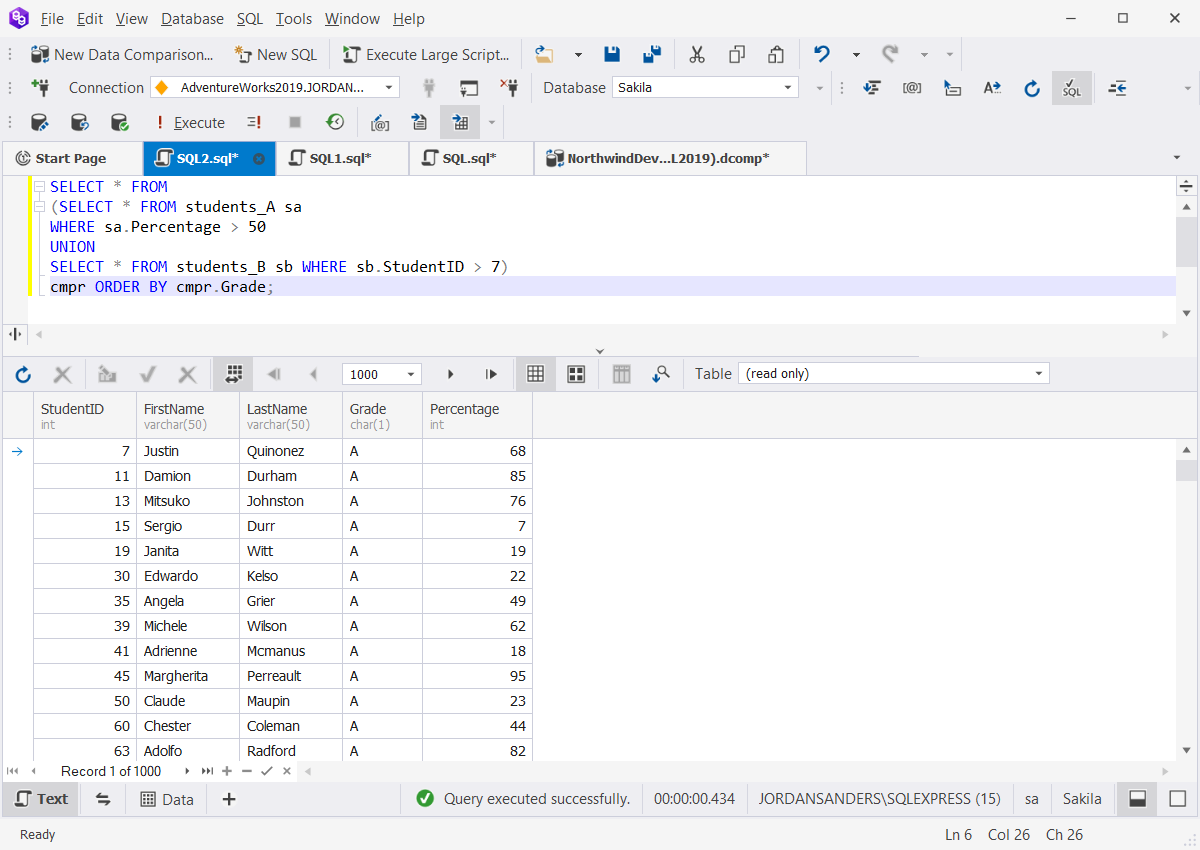
How to compare values in multiple columns in SQL Server
To compare values stored in several SQL columns, you can use the CASE statement, which returns a result based on the comparison. The CASE statement includes at least one pair of WHEN and THEN statements. The WHEN clause defines the condition to be checked. The THEN clause specifies the action if the WHEN condition returns TRUE.
In the SELECT statement, we will use the SQL CASE statement to set a value of the status column to 'Active' if the StoreID column has a value greater than 700; otherwise the value for the status column will be set to 'Inactive'.
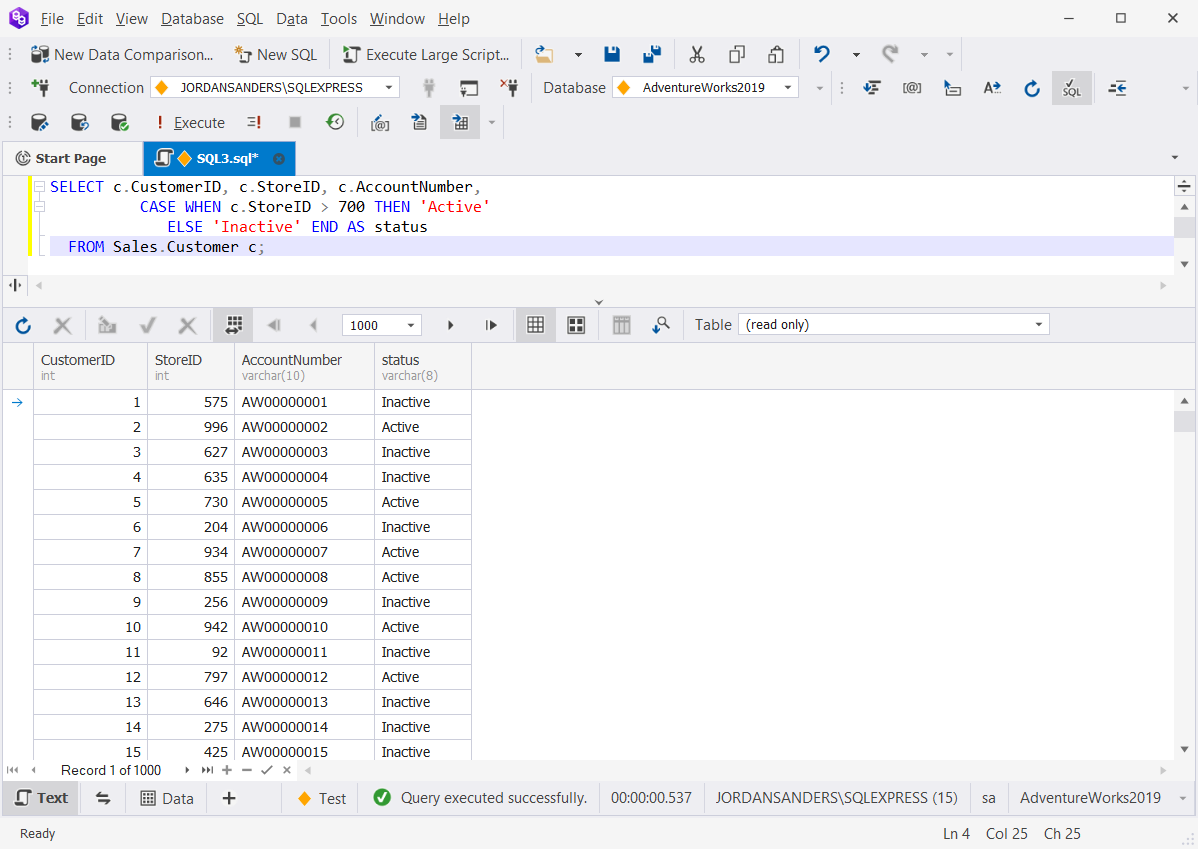
How to compare rows in the same table
You can compare values in the same row or across two rows of the same column.
Compare two values in the same row
To compare two values of the same row, you can simply use the comparison operator in the WHERE clause. For example, you want to compare a standard cost and a list price of products and get the result in the resulting grid. For this, execute the following statement:
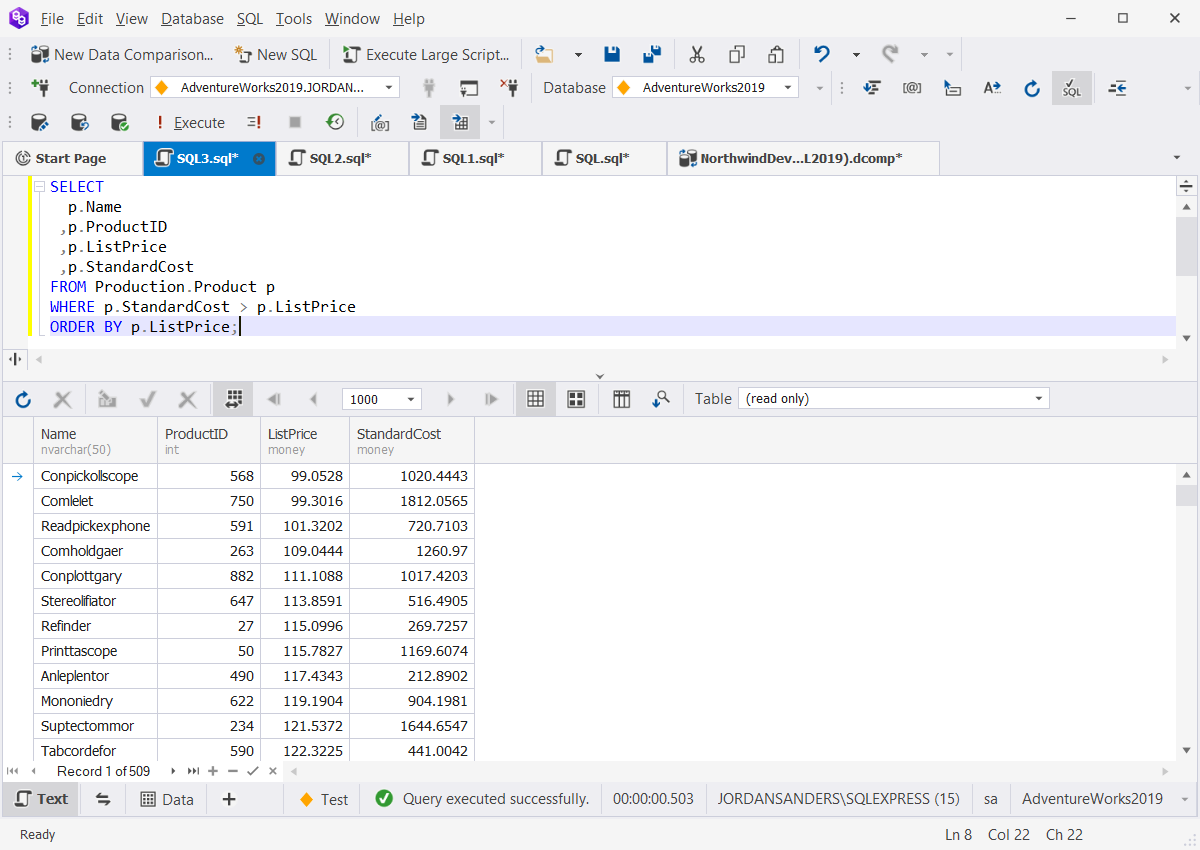
Compare two rows of the same column
In SQL, the LAG() function is used to retrieve a value from a previous row in a result set. You can use the LAG() function to compare two rows of the same column by retrieving the value of a column from the previous row and comparing it to the current row.
The syntax of the LAG() function would be:
LAG(return_value ,offset [,default])
OVER (
[PARTITION BY partition_expression ]
ORDER BY sort_expression [ASC | DESC]
);
where:
- return_value is the value from the previous row which will be returned based on a given offset.
- offset is the amount of previous rows to retrieve data from, relative to the current row. If not specified, the default value is 1. It is an optional argument.
- default is the value to be returned if the offset exceeds the scope of the partition.
- PARTITION BY splits the result set into groups returned from the FROM clause. If not specified, the result set will be considered as a single group.
- ORDER BY sorts the result set by a specified sort expression.
Here is the example of the LAG function - the SELECT statement uses the LAG() function to compare the current price of the product with the previous one in the city "Alexandria":
SELECT s.PersonID,
s.Product,
s.Price,
LAG(s.Price) OVER (
ORDER BY s.PersonID
) previous_Price
FROM Sales s
WHERE s.City = 'Alexandria';
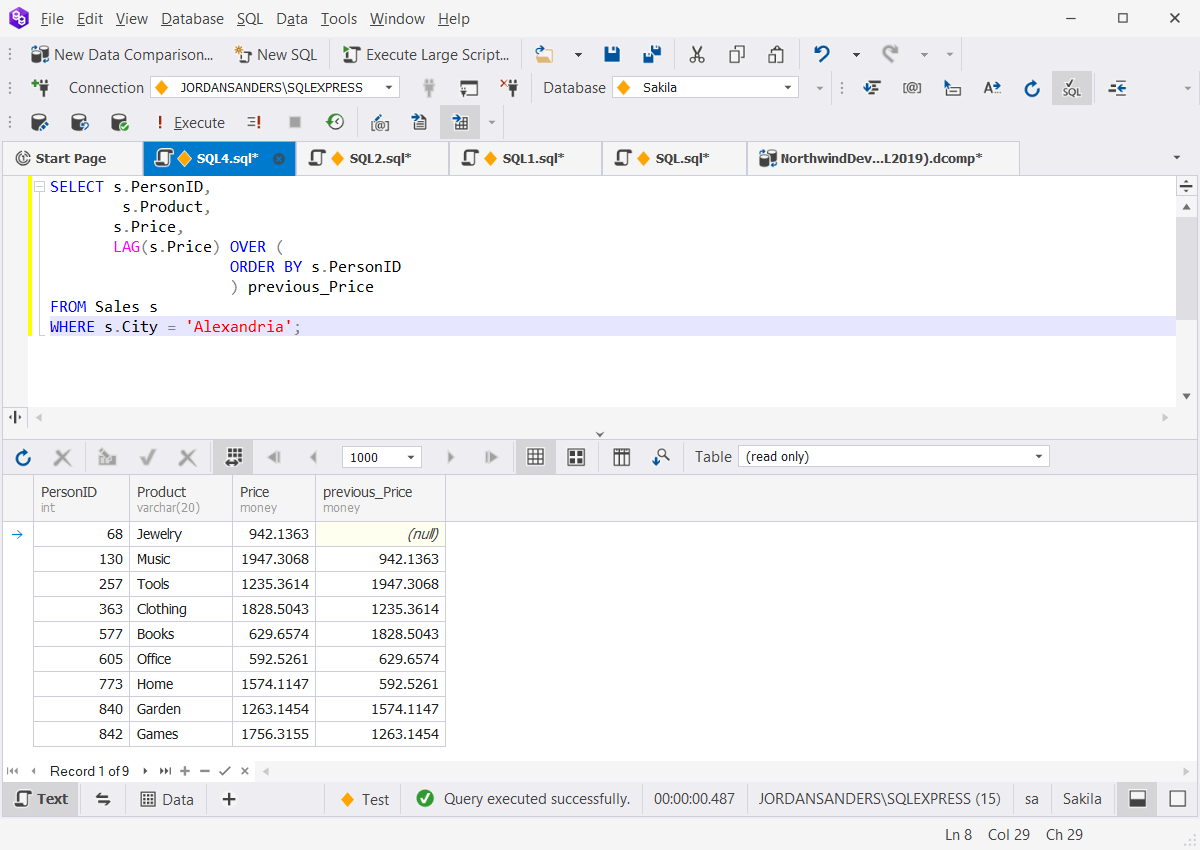
In the output, the first row is NULL because it does not have any previous rows. The second row contains the value from the previous row due to the default offset value 1.
Find the difference between date values in SQL
In SQL Server databases, dates can be stored with different date data types. However, for comparison, the date value specified by a user should match the value stored in a column; otherwise the comparison fails. The easiest way to find the difference in date values is to use dbForge Data Compare for SQL Server. The tool allows for comparing date values having different date formats. dbForge Data Compare powerful tool is designed to compare and synchronize data between different databases in a visual and user-friendly interface. With the tool, your data is kept consistent and up-to-date.
dbForge Data Compare compares the values of two date columns and visualizes the differences in the comparison result. You simply need to double-click the value on the bottom grid and the different values will be highlighted.
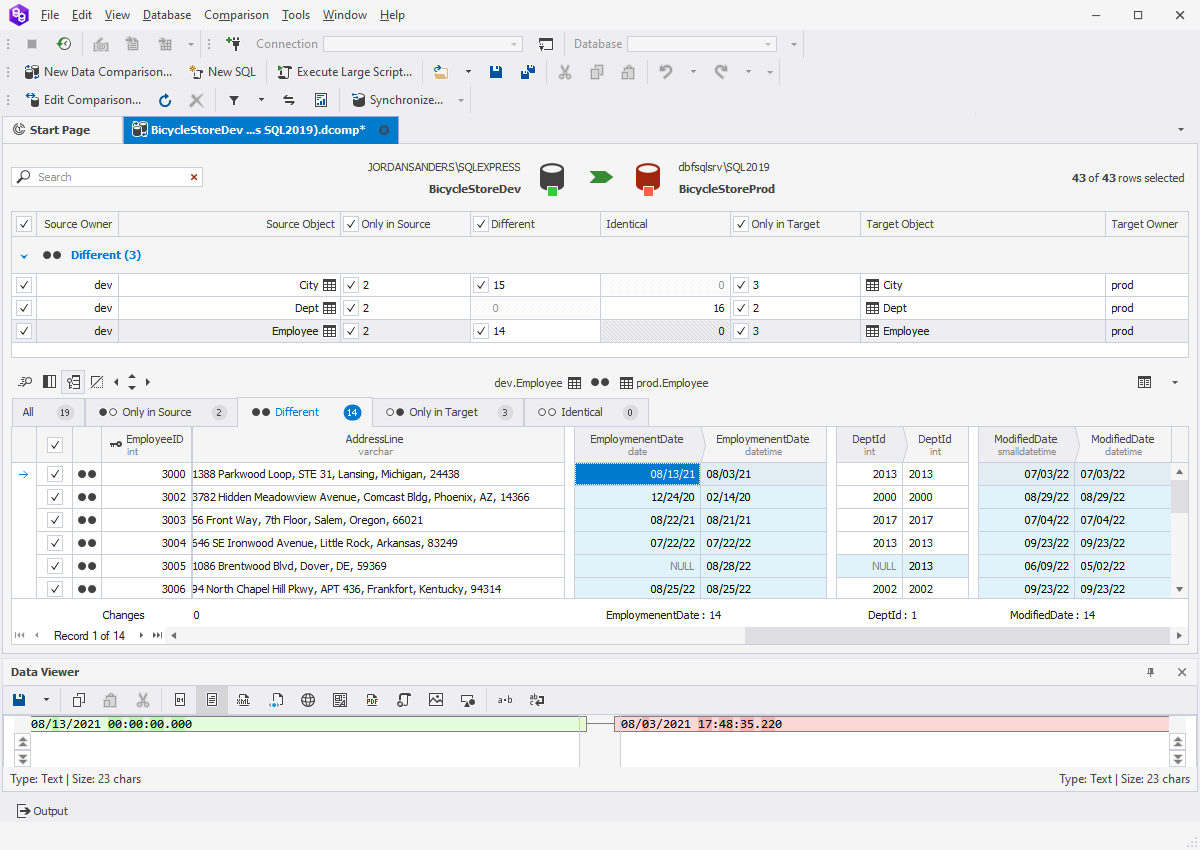
Conclusion
In SQL, you can compare rows and columns using different techniques, such as SELF JOINs, comparison operators, subqueries, UNION operator, LAG() function, or even specialized data comparison tools. Of course, any of these techniques may have their benefits or drawbacks. Which technique or tool to choose will depend on your task at hand. However, as you may noticed, dbForge Data Compare can definitely ensure more accurate and consistent data comparison and synchronization. Besides, the tool allows you to review and resolve any data discrepancies as well as automate the synchronization process.